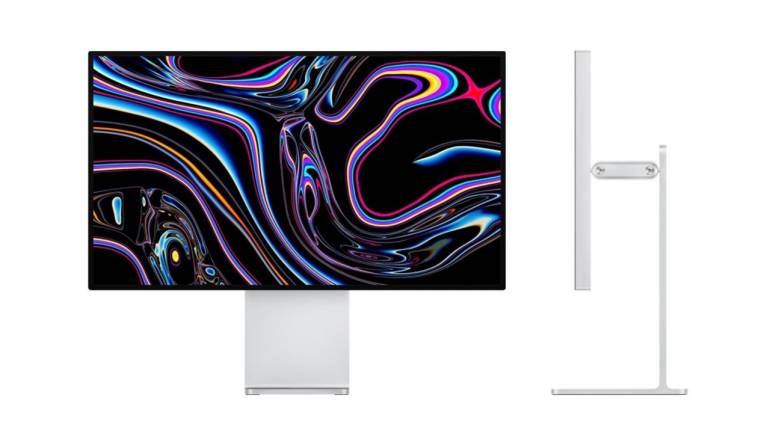The Pro Display XDR monitor starts at $4,999, while the stand is sold separately for $999.
While content creators who rely on Apple desktops lauded as Tim Cook took the lid off the new Mac Pro, the applause didn't stop there. Following his Mac Pro announcement at WWDC 2019, Cook unveiled the ultimate professional monitor to complement the high-end desktop.
Apple's new Pro Display XDR (Extreme Dynamic Range) features an eye-watering price and is an absolute beast on the spec sheet, even in the world of professional displays. Apple's new 32-inch LCD monitor boasts a resolution setting of 6,016 x 3,384; that's 20 million pixels.
This 6K HDR display is 40-per cent bigger than Apple's iMac 5K display. It offers users P3 wide colour and a million to one contrast ratio. The screen can also maintain a sustained 1,000 nits of full-screen brightness and 1,600 nits of peak brightness. Apple's Pro Display also features ultra-thin bezels, which give it an ultra-premium look.
Maintaining that 1,000 nits of brightness takes a lot of power and cooling, which is why Apple has adopted the "cheese grater" ventilation on the back of the monitor. Additionally, there's a relatively silent fan on the back of the monitor.
The standard Pro Display XDR with the glossy finish will debut at $4,999 (Approx. Rs 3,45,000), while nano-texture glass version will set you back $5,999 (Approx. Rs 4,15,000). The stand for Apple's 6K display, "Pro Stand" will set you back $999, while the VESA Mount Adapter will be priced at $199 – neither of which are included in the 'monitor's price.
Charging consumers extra for the stand does seem a bit over-the-top, but professionals who utilise these displays tend to have VESA mounts set up and don't need a stand.
Even then, $4,999 seems over-the-top. However, Apple draws a lot of comparison between this 6K HDR display and high-end reference monitors, which can cost anywhere between $18,000 to $40,000 and are generally used editing houses to make movies. Like the Mac Pro, the Pro Display XDR is aimed at creative professionals rather than average consumers.














